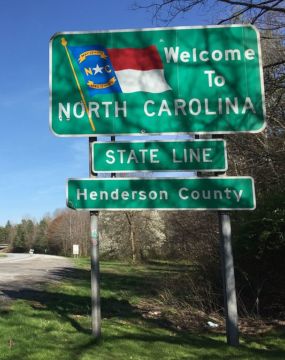Keep up with our latest demographic insights

Nationally, there are 383 metropolitan statistical areas (MSA), which are defined as an economically integrated set of counties with a core central city with a population of 50,000 or more. They range in size from Carson City, Nevada (55,414) to the New York-Newark-Jersey City MSA (19,979,477) which crosses New York, New Jersey, and Pennsylvania. Within North Carolina, there are 17 unique metro regions, ranging from Goldsboro (123,248) to Charlotte-Concord-Gastonia (2,569,213 across NC and SC). With…

Topline data from the Census Bureau’s recently released 2017 municipal population estimates shows little change from previous years’ estimates. Municipalities located near major metropolitan areas continue to grow, while North Carolina’s rural communities continue to experience population decline. 255 NC municipalities, or 46%, have experienced either population decline or zero-percent growth since 2010. Adding municipalities with stagnant growth – i.e. those that grew slower than the state growth rate of 8% - this totals over…

The percentage of the state’s total population not born in North Carolina continues to rise. Recent estimates from the American Community Survey indicate that 43% of the overall population is non-native, up 1 percentage point from previous five-year estimates when this share was 42%. This share is even higher among the adult population. Nearly half of all individuals 18 and older were born somewhere else and this group has grown faster than the population overall.…
When I moved into my first office at UNC, I inherited a framed, infographic poster published by the News & Observer after the release of the 2000 Census data. It’s a great overview of the significant growth and change that occurred in North Carolina between 1990 and 2000, and highlights many trends that continued in the decade that followed. One of these shifts was the increasing concentration of population in mid-size towns and larger cities.…
Quite frequently, North Carolina’s trends mirror national averages. Nationwide, 53% of U.S. counties lost population between 2010 and 2014. In North Carolina, 49% did. North Carolina differs slightly from the nation, however, in the county distribution of the underlying demographic processes driving population growth—or decline. In North Carolina counties it was more common for both demographic processes to move in tandem than it was nationwide. One-third of NC counties had population growth from both natural…
Between 2000 and 2010, North Carolina’s child population (ages 0 to 17) increased by almost 318,000 individuals. Unlike growth in the 65 and older population—which grew by more than 265,000 individuals and increased almost everywhere statewide—growth in the child population was uneven across the state. The child population shrank in 30 rural counties. The largest losses were in the eastern counties of Halifax (-2,387), Edgecombe (-1,188), and Martin (-1,098) and the western counties of Cleveland…
"Transportation for America's recent report, "Aging in Place: Stuck Without Options," shows that as we grow too old to drive safely, alternative transportation options are a necessity but often hard to find. Based on recent surveys, 88 percent of older adults continue to drive at age 65, but that percentage drops to 69 percent by age 75. This means that by age 75, 31 percent of seniors must seek alternative ways to get around. ...the not-so-distant future also includes…
Dynamics of population change at sub-county levels are key to understanding the local impacts of broader demographic shifts. Unfortunately, sub-county geographies, such as census tracts, change substantially from decade to decade, posing a barrier to direct comparison over time. To overcome this barrier, Carolina Demography developed a methodology to bridge (or normalize) the 2000 Census data into 2010 census tract boundaries. We then used 2010 Census data to directly compare change over time. The maps…
Forests are vital to the environmental and economic health of North Carolina. Sixty percent of North Carolina’s land area is forested, representing a total of 18.6 million forest acres. Our state’s four national forests—Croatan, Uwaharrie, Nantahala, and Pisgah—offer visitors and residents alike the opportunity to see an array of wildlife and pursue a variety of outdoor activities. In addition to recreational activities, forests improve overall quality of life through clean air and water and are…
In both this blog and recent presentations, I’ve talked a lot about migration, as net migration into North Carolina is a major factor in state total population growth. But this is only one aspect of movement and migration. Each year, many more people move within the state than move into it. In the 2012 American Community Survey, nearly 1.5 million North Carolina residents reported moving in the past year. Of these movers, the vast majority…
Your support is critical to our mission of measuring, understanding, and predicting population change and its impact. Donate to Carolina Demography today.